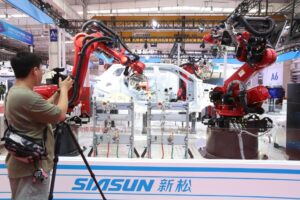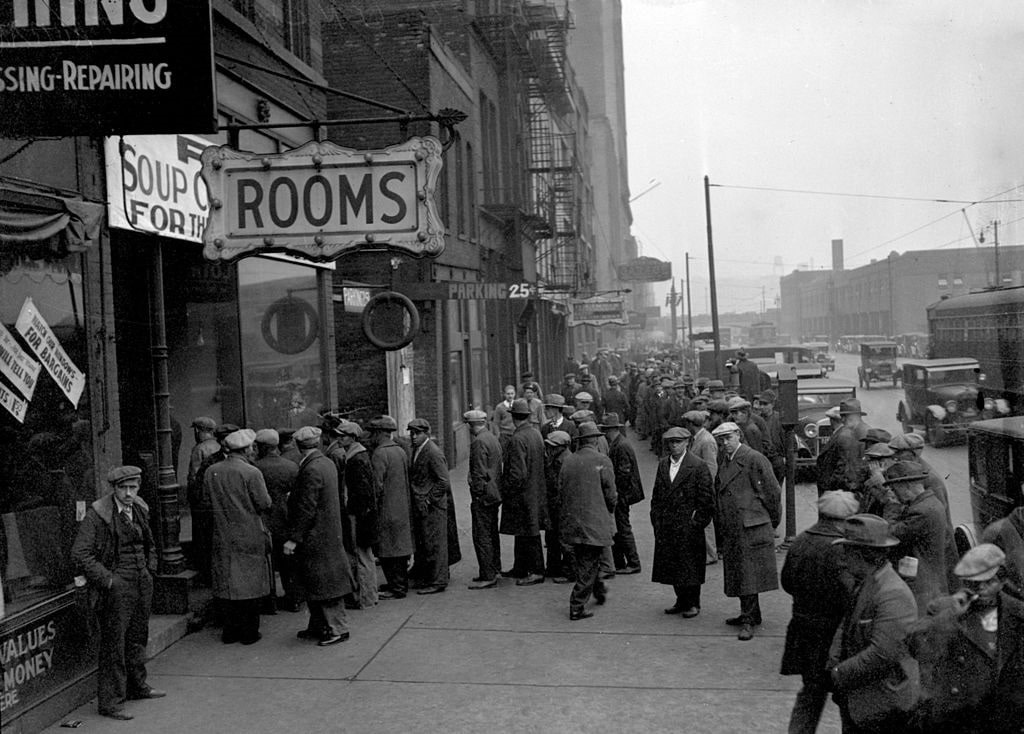The faint murmurs of an economic storm echo across the United States. After a disconcerting rise in bank failures reminiscent of the early years of the great recession of 2008, a surge in unemployment claims, and a troubling decline in retail sales, we stand on the precipice of a profound recession. These events have emerged out of a period of historic inflation levels last seen during the 70s and the early 80s. In the midst of troubling times, one could have scantily expected the introduction of a tariff regime that aims to break crucial economic relations of the US producers and consumers from its Chinese counterparts.
The global economic landscape is shaped by the ebb and flow of trade. The economy consists of a huge chain of the division of labor that is interlocked to such a limit that there exists hardly any single individual or firm that produces the whole of any product alone. This is famously illustrated in the essay “I Pencil,” by Leonard Read. The crucial importance of the supply chain in the minds of politicians may have come down from the beginning of the pandemic when in 2020-21 it was hailed as the most important issue facing the economy.
The Smooth-Hawley Tariff and the Great Depression
Sen. Bernie Sanders (I-VT) first proposed a harsh tariff on China during his time in the House of Representatives, and Sen. Josh Hawley (R-MO) has since introduced a bill echoing that idea. Now the “Sanders-Hawley Tariff” is poised to implement the most significant US tariff increase since the Smoot-Hawley Tariff Act of 1930. If enacted, the average tax on imports from China could escalate from 11.1% to an astounding 40.9%, impacting various essential goods and exacerbating the economic challenges American families are currently facing due to inflation. More importantly, the current situation in the United States closely resembles the destructive impacts of the Smoot-Hawley Tariff during the Great Depression.
Named after its sponsors, Senator Reed Smoot and Representative Willis C. Hawley, the Smoot-Hawley Tariff Act was a momentous decision that flung the door wide open to an era of deep economic despair. The act was originally designed to shield US businesses and farmers from international competition by imposing daunting tariffs on imported goods.

(Photo by Chicago Sun-Times/Chicago Daily News collection/Chicago History Museum/Getty Images)
While its intent may have been to protect American farmers and other industries from foreign competition during the onset of the Great Depression, its effects proved to be counterproductive and detrimental, and yet another classic case of the law of unintended consequences. Its introduction impeded recovery from deflation, spurred inflation, and catalyzed other damaging consequences.
At the heart of the Smoot-Hawley Tariff Act was a protectionist stance meant to insulate domestic producers. Instead, its enactment ironically impeded recovery from deflation. Deflation, a general decrease in prices, can result from lower demand, overproduction, or debt burdens. To recover from deflation, economies need to stimulate spending and bolster production. The Tariff Act, however, raised import duties to record levels, thereby discouraging trade, stifling economic growth, and perpetuating deflation.
The Smoot-Hawley Tariff Act also interfered with the process of price adjustments necessary for economic recovery. By artificially raising the prices of imported goods through tariffs, the Act skewed market dynamics. As a response to higher import costs, American manufacturers raised their prices, leading to domestic inflation. In an already fragile economy, this price inflation discouraged consumer spending, which is a crucial driver for economic recovery. By effectively increasing prices, the Tariff Act thereby hampered attempts to emerge from the deflationary spiral.
Thus, instead of fostering the desired economic resurgence, the act triggered a disastrous cascade of international retaliation. Foreign governments, irked by the aggressive protectionism, responded in kind, launching a disastrous trade war that set the global economy ablaze. US imports and exports plummeted, sinking by 66% and 61%, respectively, between 1929 and 1932, lowering prospects of recovery and leading to falling output.
Sanders-Hawley Tariff
In essence, the proposed Sanders-Hawley Tariff represents a radical shift in US tariff policy towards China, reminiscent of the historic Smoot-Hawley Tariff Act of 1930. If implemented, the potential implications range from an increased cost of living for American consumers and producers to a significant alteration of the US-China trade landscape.
Production in modern economies operates in a hierarchical structure. It begins with goods produced at the primary stages and ends with the final goods used by consumers. Goods used in the primary stages of the structure of production are created through agriculture, forestry, fishing, mining, oil extraction, and other natural resources. These inputs form the base of almost every other product or service provided to consumers and thus the are a significant component in the inflationary spiral. Rare minerals needed for EV batteries, among other crucial elements needed for numerous products imported into the United States would face uncertainty and increased cost.

(Photo by VCG/VCG via Getty Images)
The proposed tariff, which aims at reducing the dependence of the US economy on Chinese producers, mistakes crucial elements of the production process. China represents only a part of the production process, the final part, where many vital pieces from the US and other places are shipped to its warehouses for the purpose of assembling. This manner of operations is conducive to generating economic efficiency where a capital-intensive country such as the United States uses a labor-intensive country such as China for a part of its operation to save costs. Even if the production operation were to start in the United States, the assembly lines wouldn’t use huge amounts of labor, generating employment like China does. The growth would occur mostly in the form of capital-intensive machines and minimal amounts of labor. Further, it would be a waste of capital, which could else be allocated towards more efficient uses.
The second most effective influencers of prices of other goods are the semifinished goods and services used as inputs by producers during the middle stages to create final goods and services. Given their non-general and particular nature requiring specialized knowledge and resources, goods, such as certain steel products and machinery, are used by multiple producers for various next-stage products. As demand for semifinished goods increases due to a spike in competition among producers of final goods, it exerts inflationary pressures directly on final goods prices. When nearly half of America’s imports from China consist of these semi-finished capital goods, the implementation of these tariffs is going to get expensive for the US, further increasing the inflationary pressures, reducing demand and spending, and possibly creating a supply shortage.
In the echoes of history, we often find warnings for our present and future. The proposed Sanders-Hawley Tariff, invoking the specter of the Smoot-Hawley Tariff Act of 1930, serves as a stark reminder of the unintended economic reverberations that can emanate from protectionist policies.
~ Vibhu Vikramaditya was a Don Lavoie Fellow, class of 2022-2023 with the Mercatus Center at George Mason University. He has previously been published by the Mises Institute, the Pro Market Stigler Center, the University of Chicago, and Liberty Fund’s Econlib.




